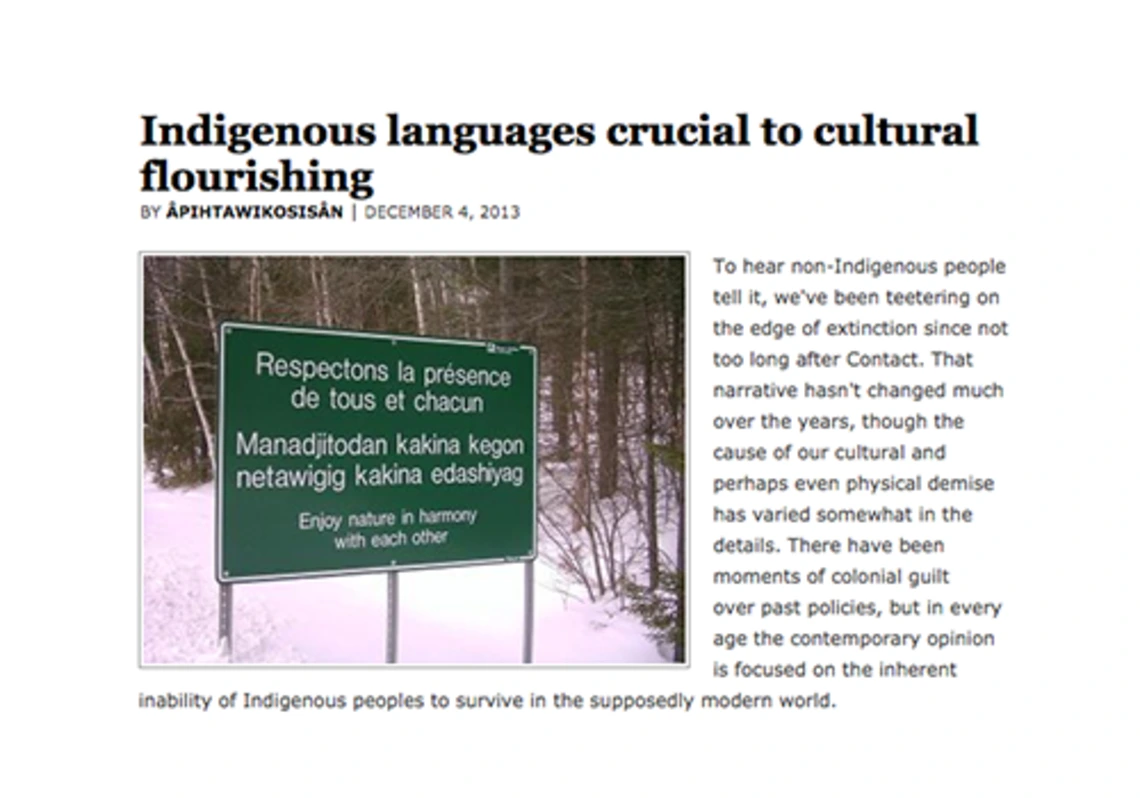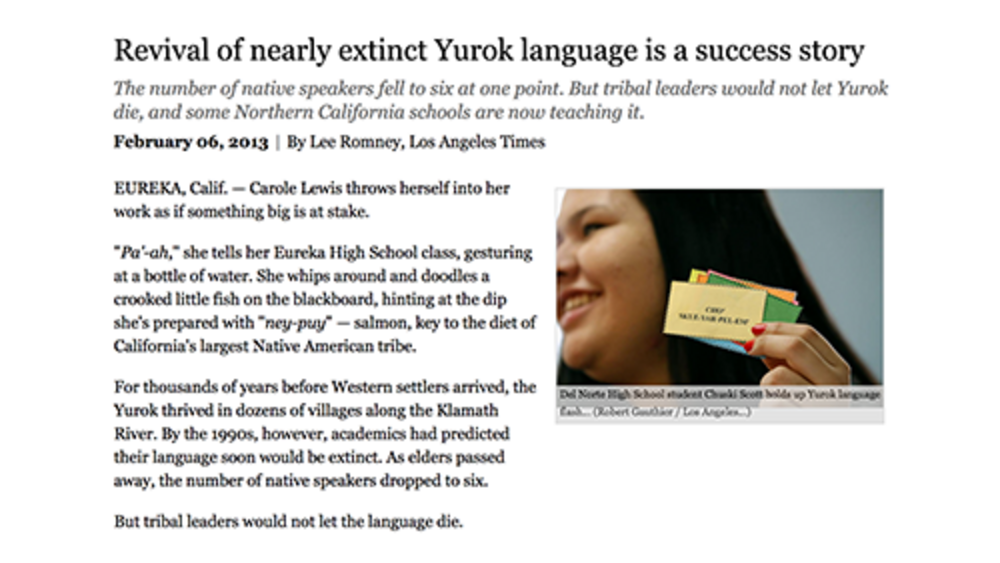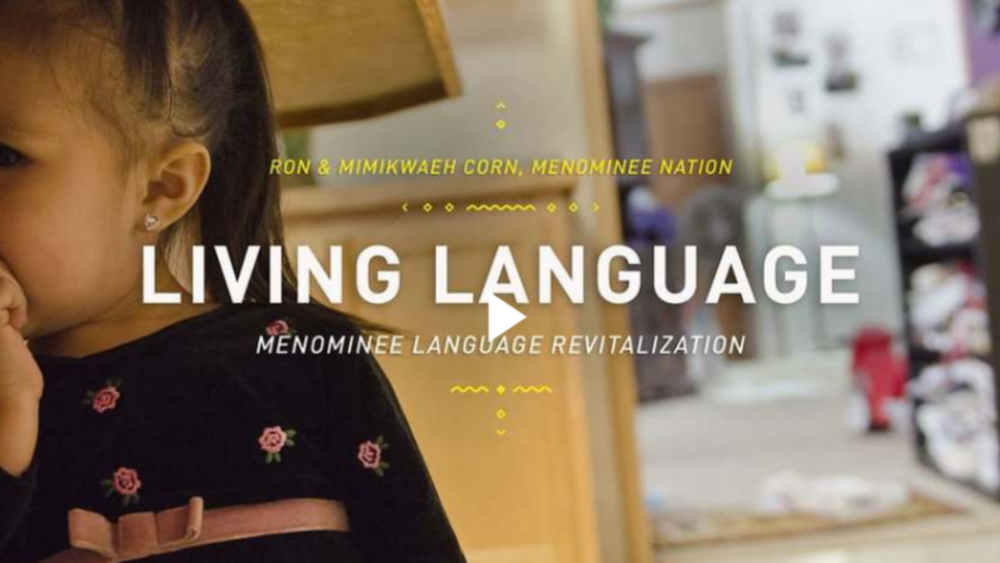I believe our languages to be so central to who we are as Indigenous peoples, that I cannot discuss our present or our future without reference to languages. The oppression we have faced, and continue to face, does not define us in the way our languages do. Our resilience, and the fact that we have not disappeared all the times it was predicted that our end was just around the corner, is very much rooted in our languages. The ability to transmit our languages to our children has been actively interfered with for generations, and remains greatly threatened. The fact that anyone remains at all to speak our languages is a cause for celebration, and such tenacity in the face of unimaginable adversity warrants admiration. Think about that for a moment....
Additional Information
Âpihtawikosisân (Chelsea Vowel). "Indigenous languages crucial to cultural flourishing." Rabble.ca. December 4, 2013. Blog. (http://rabble.ca/blogs/bloggers/apihtawikosisan/2013/12/indigenous-langu..., accessed July 25, 2023)




